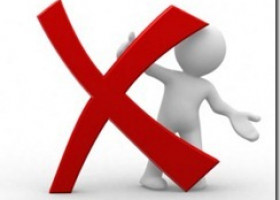
أخطاء تسويقية قاتلة
لماذا يفشل التسويق ؟ يحدد عميد علم التسويق فيليب كوتلر عشرة أسباب رئيسية يعتبرها أوجه قصور في ممارسات التسويق المعاصر، منبها إلى أن الأزمة أزمة ممارسة تسويق وليس نظريات تسويق: عدم تركيز وتوجه الشركات نحو التسويق واستهداف العملاء بشكل كاف عدم فهم واستيعاب المؤسسة لعملائها المستهدفين، من حيث الاحتياجات والتغيرات التي تنتابهم. عدم قيام الشركة بمتابعة ورصد أحوال منافسيها، وبذلك تتأخر عنهم، ولا تواكب أي تطورات تطرأ عليهم. سوء إدارة المؤسسة لعلاقاتها مع حملة أسهمها، إما بتجاهلهم تماما أو بالتركيز على متطلباتهم دون غيرهم. عدم تمكن الشركة من العثور على فرص جديدة ، أو التعرف عليها واقتناصها، كأي تطور تكنولوجي جديد، أو أية أسواق جديدة، أو حتى أي ثغرات أو فراغ تتركه شركة تركت السوق. قصور وأخطاء في إجراءات التخطيط التسويقي، كالفهم الخطأ للسوق أو آلياته. قصور في مجال سياسات الإنتاج أو خدمة العملاء، مما يهدر أية مجهودات تسويقية تقوم بها المؤسسة. ضعف محاولات ومجهودات الشركة لتكوين الماركة وتوصيلها للعملاء. عدم تنظيم المؤسسة جيدا، بحيث ينعكس ذلك على مجهودات التسويق. عدم استغلال التطور التكنولوجي بشكل كاف، مما يساعد على تدهور ترتيب الشركة في قائمة الشركات الناجحة المواكبة للتطور والتي تحسن استغلاله لصالحها. ويختتم كوتلر كتابه بعشر وصايا للتسويق الناجح الفعال، هي: تقسيم السوق إلى قطاعات واختيار أفضلها وتكوين مركز ووضع…
Besides winning business practices, is there a set of winning marketing practices? One frequently hears of one-liner formulas that promise marketing success. Here are nine of the more prominent one-liners: 1. Win Through Higher Quality Everyone agrees that poor quality is bad for business. Customers who have been burned with bad quality won’t return and will bad-mouth the company. But what about winning through good quality? There are four problems. First, quality has a lot of meanings. If an automobile company claims good quality, what does it mean? Do its cars have more starting reliability? Do they accelerate faster? Do the car bodies wear better over time? Customers care about different things, so a quality claim without further definition doesn’t mean much. Second, people often can’t tell a product’s quality by looking at it. Consider buying a television receiver. You go into Circuit City and see a hundred different sets with the picture on and the sound blaring. You Look at a few popular brands that you favor. The picture quality is similar with most receivers. The casings may differ but hardly tell you anything about the set’s reliability. You don’t ask the salesperson to open the back of the…
Continue reading …Pharmaceutical marketing sometimes called medico-marketing, is the business of advertising or otherwise promoting the sale of pharmaceuticals or drugs. Evidences show that marketing practices can negatively affect both patients and the health care profession.[1] Many countries have measures in place to limit advertising by pharmaceutical companies. Pharmaceutical company spending on marketing far exceeds that spent on research.[2][3] In Canada, $1.7 billion was spent in 2004 to market drugs to physicians; in the United States, $21 billion was spent in 2002.[4] In 2005 money spent on pharmaceutical marketing in the US was estimated at $29.9 billion with one estimate as high as $57 billion.[3] When the US number are broken down 56% was free samples, 25% was detailing of physicians, 12.5% was direct to consumer advertising, 4% on hospital detailing, and 2% on journal ads.[4] Contents 1 History 2 To health care providers 2.1 Free samples 2.2 Continuing medical education 2.3 Pharmaceutical representatives 2.4 Peer influence 2.5 Journal articles 2.6 Private and public insurers 3 To consumers 4 Economics 5 Regulation 6 Evolution of marketing History The marketing of medication has a long history. The sale of miracle cures, many with little real potency, has always been common. Marketing of legitimate…
Continue reading …Here are some guidelines on branding, and for planning and managing advertising and promotion activities for small businesses. The principles transfer to very large businesses. In fact many very large organisations forget or ignore these basic rules, as you will see from the featured case-study example. Branding Branding refers to naming a business or product or service. A brand will typically also have a logo or design, or several, associated with it. Facebook is a brand. So is Cadbury (a company brand, although now a division of a bigger one), and so is Milky Way (a Cadbury product brand). So is Google (so big a brand and a part of life it’s become a verb, ‘to google’). So is Manchester United (upon which a vast merchandise business has been built). And so increasingly is your local school, hospital, and council. Brands are everywhere. If your name is John Smith and you start a landscape gardening business called John Smith Landscape Gardening, then John Smith Landscape Gardening is a brand too. Branding is potentially a complex subject because it extends to intellectual property and copyright, trademarks, etc., for which, if you are embarking on any significant business activity, you should seek…
Continue reading …